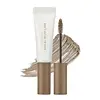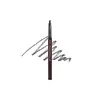What's inside
What's inside
 Key Ingredients
Key Ingredients

 Benefits
Benefits

No benefits
 Concerns
Concerns

 Ingredients Side-by-side
Ingredients Side-by-side

Isododecane
EmollientTrimethylsiloxysilicate
EmollientCeresin
Emulsion StabilisingTitanium Dioxide
Cosmetic ColorantTalc
AbrasiveDisteardimonium Hectorite
StabilisingMicrocrystalline Wax
Emulsion StabilisingDextrin Palmitate
EmulsifyingCI 77492
Cosmetic ColorantPropylene Carbonate
SolventPolypropylsilsesquioxane
CI 77499
Cosmetic ColorantDextrin Palmitate/Ethylhexanoate
EmulsifyingPolyisobutene
PEG-20 Glyceryl Stearate
EmulsifyingCI 77491
Cosmetic ColorantPolymethylsilsesquioxane
Triethoxycaprylylsilane
Glyceryl Caprylate
EmollientSilica
AbrasiveIsododecane, Trimethylsiloxysilicate, Ceresin, Titanium Dioxide, Talc, Disteardimonium Hectorite, Microcrystalline Wax, Dextrin Palmitate, CI 77492, Propylene Carbonate, Polypropylsilsesquioxane, CI 77499, Dextrin Palmitate/Ethylhexanoate, Polyisobutene, PEG-20 Glyceryl Stearate, CI 77491, Polymethylsilsesquioxane, Triethoxycaprylylsilane, Glyceryl Caprylate, Silica
CI 77499
Cosmetic ColorantHydrogenated Soybean Oil
EmollientHydrogenated Coco-Glycerides
EmollientCI 77891
Cosmetic ColorantSynthetic Fluorphlogopite
Hydrogenated Vegetable Oil
EmollientZinc Stearate
Cosmetic ColorantStearic Acid
CleansingCopernicia Cerifera Wax
Polyglyceryl-2 Triisostearate
EmulsifyingCI 77491
Cosmetic ColorantCI 77492
Cosmetic ColorantPhenoxyethanol
PreservativeTocopherol
AntioxidantAscorbyl Palmitate
Antioxidant
 Reviews
Reviews

Ingredients Explained
These ingredients are found in both products.
Ingredients higher up in an ingredient list are typically present in a larger amount.
Ci 77491 is also hydrated iron III oxide. It's sole purpose is to give a red/pink hue to products.
Iron III oxides are classified as inorganic chemicals for coloring.
Synthetically created Ci 77491 is considered safer than those naturally found. This is because the synthetically created version may contain less impurities. Iron oxides are generally non-toxic and non-allergenic.
Learn more about CI 77491Ci 77492 is also hydrated iron III oxide. It's sole purpose is to give a yellow hue to products.
Iron III oxides are classified as inorganic chemicals for coloring.
Synthetically created Ci 77492 is considered safer than those naturally found. This is because the synthetically created version may contain less impurities. Iron oxides are generally non-toxic and non-allergenic.
Learn more about CI 77492Ci 77499 is also hydrated iron III oxide. It is created from mixing red and black iron oxides. This helps give shades of darkness to a product.
Iron III oxides are classified as inorganic chemicals for coloring.